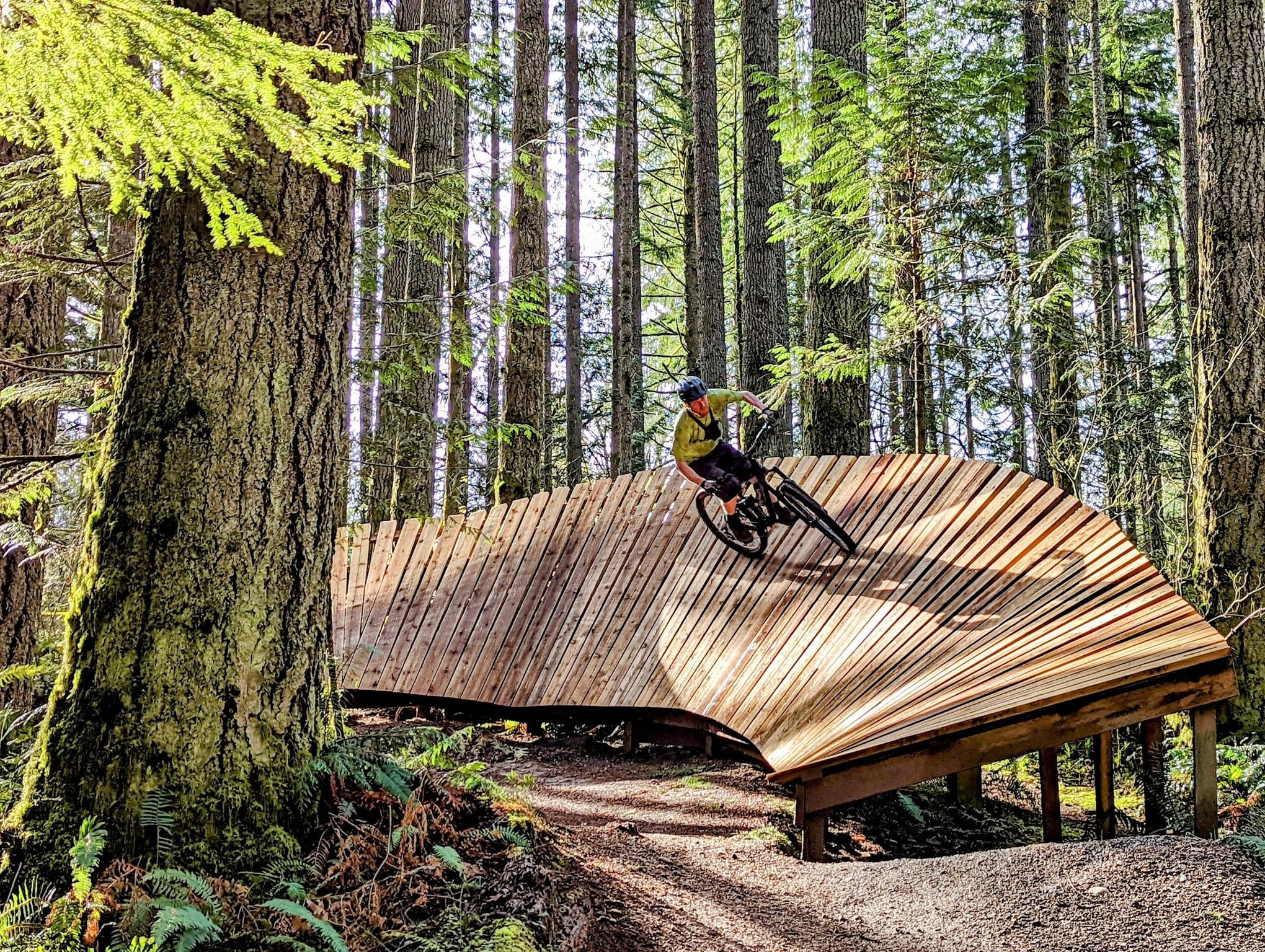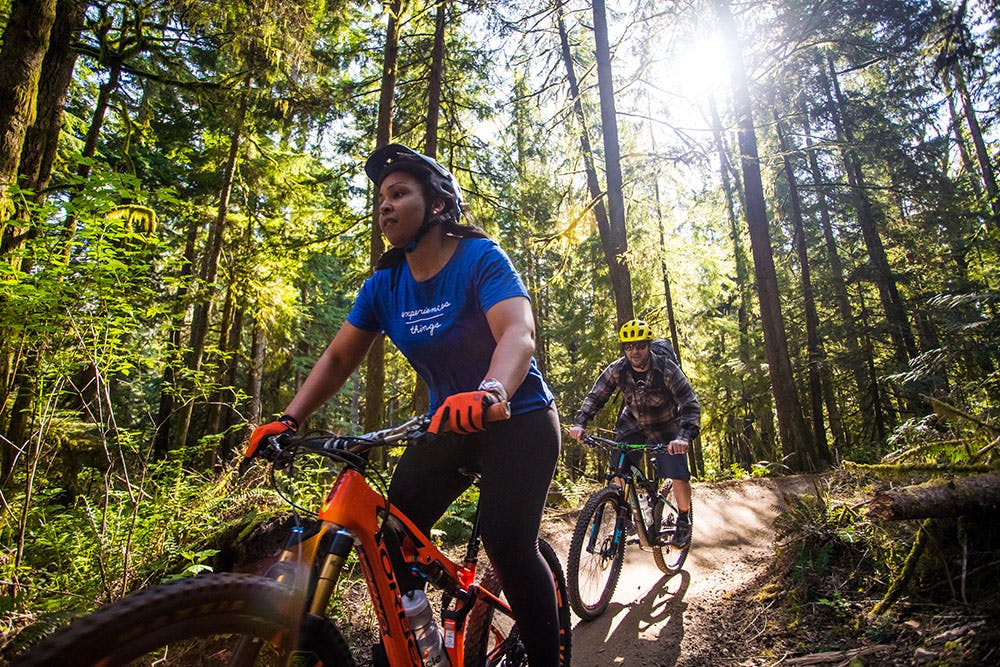Mountain biking is an exhilarating outdoor activity that offers both physical and mental challenges. For beginners, it can be an intimidating endeavor to navigate through rugged terrains and steep slopes. However, with the right trails designed specifically for newcomers, mountain biking can become an accessible and enjoyable experience for all.
When it comes to mountain biking trails for beginners, safety is paramount. These trails are carefully designed to provide a smooth introduction to the sport, with gentle slopes and well-maintained paths. They offer a mix of scenic landscapes and thrilling descents, allowing beginners to build confidence while enjoying the beauty of nature. With dedicated trails available, beginners can focus on developing their skills and gradually progress to more advanced trails as they gain experience. Mountain biking for beginners is not only a thrilling adventure but also a pathway to a healthier and more active lifestyle.
When it comes to mountain biking trails for beginners, safety and enjoyment are key. Start with trails that have beginner-friendly features like gentle slopes and clear paths. Look for trails with proper signage and easy-to-follow markers. It’s also crucial to choose trails that match your skill level and fitness. Remember to wear the appropriate safety gear and always carry essential items like a repair kit and water. Stay hydrated, be mindful of your surroundings, and take breaks when needed. Happy biking!

Choosing the Right Mountain Biking Trail for Beginners
Mountain biking is an exhilarating outdoor activity that combines physical fitness, adventure, and a connection with nature. For beginners, choosing the right trail is essential to ensure an enjoyable and safe experience. Beginner-friendly mountain biking trails offer a mix of manageable terrain, scenic views, and limited technical challenges. This article will guide you through the process of selecting the perfect mountain biking trail as a novice rider.
Consider Your Fitness Level
Before embarking on a mountain biking adventure, it’s important to assess your fitness level. Beginner trails typically require moderate fitness, but it’s essential to choose a trail that aligns with your current capabilities. If you’re new to mountain biking or have a sedentary lifestyle, opt for shorter, less challenging trails that allow you to build endurance gradually. As your fitness improves, you can explore more demanding trails.
It’s also advisable to consult with a healthcare professional before starting any physical activity, especially if you have pre-existing health conditions or injuries. They can provide guidance on the level of exertion that is appropriate for you and offer recommendations on specific trails suitable for beginners.
Additionally, consider the elevation gain of the trail. Steep ascents and descents require more energy and can be challenging for beginners. Opt for trails with gradual inclines and minimal elevation changes to ease into mountain biking and avoid overexertion.
Remember, mountain biking is a physically demanding activity, and it’s important to listen to your body. Start with trails that match your fitness level and gradually challenge yourself as you improve.
Assess the Technical Difficulty
When selecting a mountain biking trail as a beginner, it’s crucial to evaluate the technical difficulty. Technical trails are characterized by obstacles such as rocks, roots, drop-offs, and tight corners. For novice riders, it’s advisable to choose trails with minimal technical challenges.
Look for well-maintained beginner trails that feature wider paths, smoother surfaces, and fewer technical features. These trails allow you to focus on your riding technique and gradually develop the necessary skills for more advanced trails.
Some beginner trails may still include small obstacles and occasional technical features to provide a learning opportunity. However, they are usually clearly marked and can be easily navigated by novices with proper caution and technique.
Evaluate the Trail Length
The length of the trail is another important factor to consider as a beginner mountain biker. It’s recommended to start with shorter trails to avoid fatigue and allow for a more enjoyable experience.
Look for trails with distances that align with your endurance level and time availability. Shorter trails allow you to focus on the ride itself without feeling overwhelmed. As your fitness and skills progress, you can gradually increase the distance and explore longer trails.
Consider the time it takes to complete the trail, including breaks and rest stops. Overestimating your abilities and choosing a longer trail can lead to exhaustion and potentially unsafe situations. Remember, mountain biking is about enjoying the ride, not rushing to finish.
Research Trail Conditions and Amenities
Before hitting the trails, it’s important to research the trail conditions and available amenities. Check for recent trail updates, closures, or any specific requirements, such as permits or fees.
Consider the season and weather conditions when choosing a trail. Some trails may be more suitable for beginners during certain times of the year. For example, muddy or icy terrain can make riding more challenging and potentially dangerous.
Furthermore, consider the amenities available at the trailhead or along the route. Access to parking, restrooms, drinking water, and picnic areas can enhance your overall experience as a beginner.
Conclusion
Choosing the right mountain biking trail for beginners is essential to ensure a safe and enjoyable experience. Consider your fitness level, assess the technical difficulty, evaluate the trail length, and research trail conditions and amenities. By taking these factors into account, you can select a trail that aligns with your capabilities and provides an opportunity to develop your skills and confidence as a novice mountain biker. Remember, mountain biking is not just about conquering difficult trails; it’s about embracing the journey and immersing yourself in the beauty of nature.
Mountain Biking Trails for Beginners
Mountain biking is an exhilarating outdoor activity that offers a great way to explore nature while getting some exercise. For beginners, it’s important to find trails that are suitable for your skill level and provide a safe and enjoyable experience. Here are a few mountain biking trails that are perfect for beginners:
- Brown Mountain Loop Trail – Located in North Carolina, this trail offers a scenic ride through the Pisgah National Forest with gentle climbs and descents.
- Green Mountain Loop – Situated in Colorado, this trail offers breathtaking views of the Rocky Mountains and features a mix of easy and intermediate sections.
- Lake Macbride Trail – Found in Iowa, this trail offers a well-maintained path with a few technical challenges and beautiful scenery along the way.
Before hitting the trails, it’s important to be properly prepared. Make sure you have the right equipment, including a helmet, gloves, and knee pads. Familiarize yourself with the basic techniques of mountain biking, such as shifting gears and braking.
Remember to start slow and gradually increase the difficulty of the trails as you gain confidence and improve your skills. It’s also a good idea to go with a friend or join a local cycling group for added safety and support. Happy riding!

Frequently Asked Questions
Are you a beginner looking to explore mountain biking trails? Here are some commonly asked questions to help you get started on your mountain biking journey:
1. What are the best mountain biking trails for beginners?
When starting out, it’s important to choose mountain biking trails that are suitable for beginners. Some of the best trails for beginners include:
– Green-rated trails: These trails are easy and cater to beginners. They have smooth surfaces, gentle slopes, and are well-marked.
– Beginner-friendly parks: These parks have dedicated beginner trails with less challenging features. They often provide rental bikes and instruction.
2. What should beginners pack for a mountain biking trail?
When heading out for a mountain biking trail, beginners should pack the following essentials:
– Helmet: Protect your head with a properly fitting helmet.
– Bike repair kit: Carry a basic repair kit with tools and spare parts, such as inner tubes and a multi-tool.
– Water and snacks: Stay hydrated and energized with plenty of water and snacks.
3. How can beginners improve their mountain biking skills?
Improving mountain biking skills takes practice and dedication. Here are some tips for beginners:
– Take lessons: Enroll in a mountain biking class or take lessons from an experienced rider.
– Ride regularly: The more you ride, the more comfortable you’ll become. Practice on different trails to enhance your skills.
4. Are there any safety tips for beginners on mountain biking trails?
Ensuring your safety while mountain biking is crucial. Here are some safety tips for beginners:
– Wear protective gear: Apart from a helmet, wear knee pads, elbow pads, and appropriate clothing.
– Know your limits: Start with easy trails and gradually progress to more challenging ones as your skills improve.
5. What are some common mountain biking trail etiquettes for beginners?
When riding mountain biking trails, beginners should adhere to the following trail etiquettes:
– Yield to other trail users: Give way to hikers and uphill riders and be respectful of their space.
– Stay on the trail: Avoid going off-trail and damaging the surrounding environment.
How To Start Mountain Biking | Beginner Mountain Biking Guide
So if you’re a beginner looking to venture into mountain biking, there are plenty of trails out there that are perfect for you. These trails provide a fun and safe environment for beginners to get a taste of the sport and build their skills.
Remember to start with the easier trails and gradually work your way up as you gain confidence and experience. And don’t forget to wear the necessary safety gear and bring plenty of water and snacks. With the right mindset and preparation, you’ll be able to enjoy the thrill of mountain biking while staying safe on the trails.
Other Post –
- The Top 10 Bike Repair Kits of 2024 – Read More
- Top 10 Ebike Battery 2024 – Read More
- Motorized Bikes – Read More
- 2024’s Bike Tracker TOP 10 Reviews – Click Here
- The Top 10 Mountain Bikes of 2024 for Thrilling Adventures – Click Here

